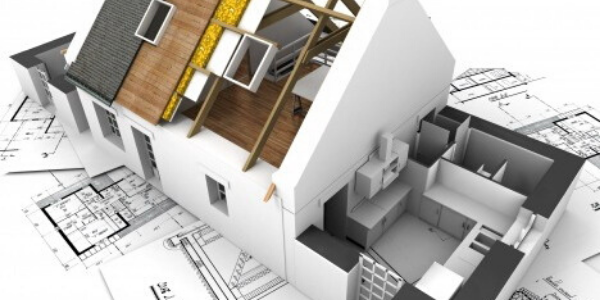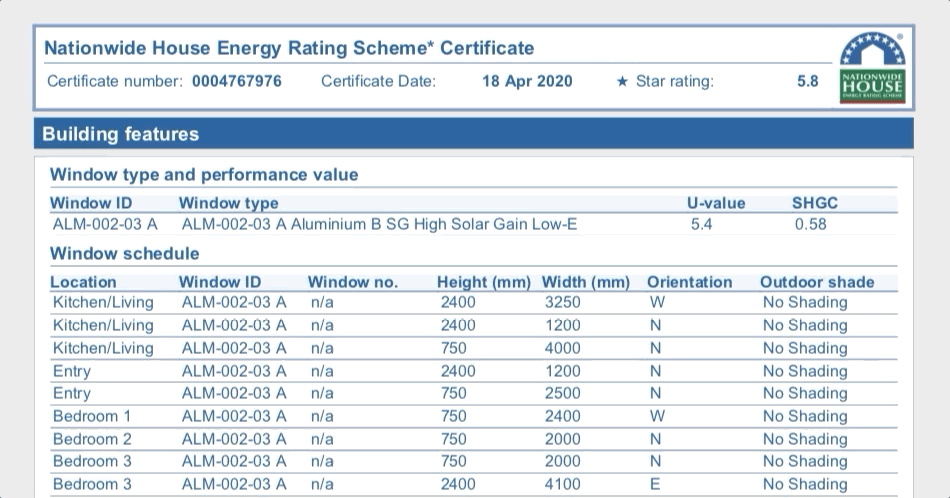15 min read
Beginners Guide to Thermal Performance Assessments
This article is a beginners guide to Thermal Performance Assessments. So if you need to know "What is Thermal...

"With 17+ Years of experience in ESD Consulting, you will be well served by our qualified and personally selected in house specialist NatHERS Certifiers. Please reach out, we would love to work with you on your next important project."
Director, Certified Energy
NatHERS is short for the Nationwide House Energy Rating Scheme. It uses a 10 star rating system to assess the thermal performance of dwellings across Australia. The National Construction Code (NCC) references these star ratings specifying a minimum number of star levels for all new houses built in Australia.




Helping you make smart ESD decisions for your project - saving you time and money - on the following type of projects:
.png)

Green, red, and once even bright pink, we have worked on projects from all walks of life in every State and Territory around Australia. Certified Energy has a portfolio of over 5000 NatHERS projects, with each a bit of energy saved and a positive environmental outcome for us all.

Strap a rocket to your ESD Consultant's back
with this must have NatHERS Checklist.

Everything you need to know about obtaining a NatHERS Certificate for your project is now compiled in our 6 Star NatHERS Certificate resource.
Volume I:
|
Volume II:
|
The Nationwide House Energy Rating Scheme (NatHERS) is used to measure the energy efficiency of homes by providing a star rating. Each project is given a star rating between 0 and 10 which signifies its thermal performance. To meet NCC requirements a minimum of a 6 star rating is often required.
NatHERS is assessed through a process of thermal modelling where the proposed dwelling is modelled using NatHERS approved software. The construction type, materials, glazing, lighting and insulation are used to assess the overall annual thermal performance of the project. Climate data within the software determines the development’s total heating and cooling load throughout the year, with specific heating and cooling targets outlined by NatHERS that need to be met.
NatHERS Accredited Software is used to calculate an energy efficiency star rating and is based on expected indoor temperatures. This is assessed by assessing the project’s design, climate and household use. The tool therefore does not take electrical appliances within the dwelling into consideration, other than the air flow from the dwelling’s ceiling fans.
A NatHERS accredited assessor will enter data into the software which will generate a simulation model of the dwelling. The simulation model will include: sizes and functions of the rooms, sizes and specification of openings, building materials/windows/products, type of construction, dwelling orientation and location.
The simulation model will determine the level of heating or cooling temperature that is needed for occupants to remain comfortable within the dwelling.
The NatHERS Accredited software model will determine the need for heating and cooling systems when internal temperatures fall outside of a comfortable range. This is based on assuming that occupants will open and close windows, blinds or awnings in an attempt to restore a comfortable temperature level prior to using the heating or cooling system.
Once the steps above have been completed, the total annual estimated levels of energy efficient heating and cooling are determined by a ranking out of 10 stars.
For an accredited assessor to assess a project through the NatHERS process, they require the full plans, sections and elevations for the building as well as the building materials and glazing types that are intending to be used so that the building can be simulated accurately.
Generally, appliances such as, air-conditioners, etc. do not need to be known by the assessor as they do not affect the star rating as NatHERS energy ratings are based on how well designed the dwelling will be. Appliances that are added to the building and are likely to be changed in the future are not taken into consideration.
The possible 0 to 10 stars is a scale that indicates the energy efficiency of a dwelling. If a dwelling is rated 0 stars, that means it offers no insulation from the outside temperature. For example, if it is 20 degrees outside it will be 30 degrees inside. A 10-star dwelling is able to maintain a comfortable inside temperature all year round despite the outside temperature is. Hence, the more stars a dwelling has the less energy it consumes, therefore reducing energy expenses.
To see a guideline of our NatHERS pricing, please click here
The National Construction Code (NCC formally known as the BCA) requires all new residential dwellings in Australia (Except NSW)* to achieve a minimum of a 6 Star Rating using the Nationwide House Energy Rating Scheme (NatHERS), approved software.
This NatHERS software estimates the internal temperature in each room of a dwelling for each hour of the year based on assumptions about occupant behaviour, information about the structure and specification of the dwelling and standard weather data for the dwelling's location.
The internal temperature is compared against a comfortable temperature range and occupancy pattern to estimate the annual heating and cooling loads per square metre of floor area to keep the temperature within the comfort range. The loads are adjusted and converted into a star rating between 0 and 10. A 10 star home is unlikely to need any artificial cooling or heating to maintain comfortable internal conditions, whereas a 0 star home would offer virtually no protection from the external temperature.
One of our most frequent requests from our clients is to reduce or remove the requirements of double glazing on their projects. Double Glazing can cost up to twice the amount of single glazing and on some projects it can tip the feasibility scales. Every year it seems the ever improving Energy Efficiency - Section J of the National Construction Code and the National Thermal Comfort (NatHERS) regulations are making it increasingly difficult to avoid specifying double glazing. However, at Certified Energy we have 5 tried and true tips that will go a long way to avoid specifying double glazing on your next project.
Perhaps the only, yet most important variable that we as Thermal Comfort Assessors don't have direct control over on this list is the Glass to Floor Ratio on a project. A Glass to Floor (GtF) ratio is the total glazed area added together on a project divided by the total floor area of a project to give an overall percentage. Coming from an Architectural background I can understand that this dynamic glass to floor relationship on a project can be at the heart of the overall aesthetic appeal, but if it is not taken into account at the early design phases of a project an overly high Glass to Floor Ratio can have devastating effects to the heat loss of your project, as heat loss is generally twice high in glazed sections of your project compared to insulated walls.
From our experience and as a general rule of thumb, here are our recommended glazing types that are required based on a projects overall % of glass to floor area (applying to the majority of climate zones).
To further illustrate this point, a typical project home will have approximately 18-20% of glass to floor ratio, this can be compared to an Architecturally designed 2 story 'glass box' type house which we previously assessed that had an unusually high glass to floor ratio of over 55%.
Standard bulk wall insulation with reflective foil to fit within a 90mm frame for typical Brick Veneer construction has a highest R value of R2.5. It is possible however to use rigid foam insulation which comes in thickness of up to 40mm which can then provide a total Rt of up to R5.6 for Brick Veneer construction. Providing two layers of this rigid insulation product in the 90mm brick veneer frame effectively doubles the insulation in the external walls. This method is often much more cost effective than having to specify double glazing on a project.
This article is a beginners guide to Thermal Performance Assessments. So if you need to know "What is Thermal...
Prior to commencing most types of developments in NSW, you will have to lodge a Development Application (DA) with your...
Building for the Australian Climate.
A building’s access to sunlight is one of the leading factors contributing to its...
FOR IMMEDIATE RELEASE
Sydney, 11 March 2025
Certified Energy is pleased to announce our...